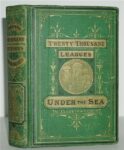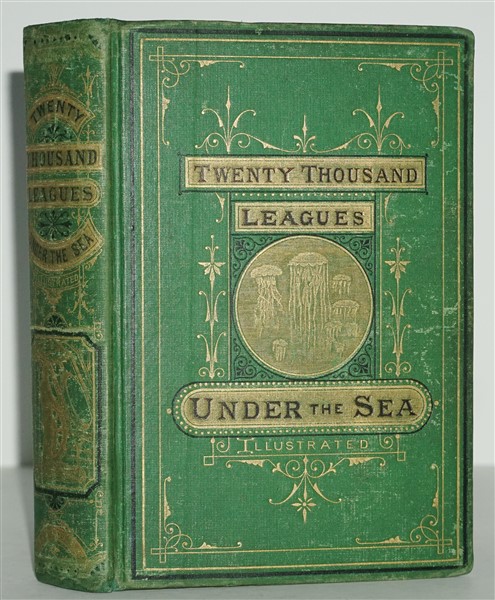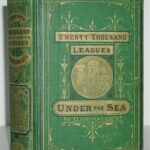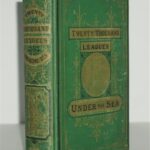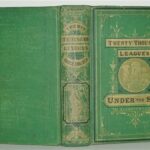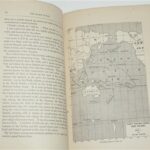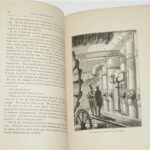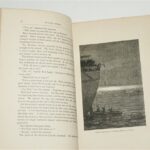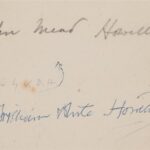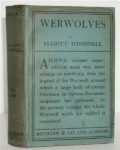James R. Osgood and Company, 1873
First Edition, First printing: THE EXCEEDINGLY RARE TRUE FIRST AMERICAN EDITION, FIRST ISSUE of Verne’s masterpiece of the sea, with the jellyfish vignette and lacking the final “s” in “Seas” on the cover, and with “The End” present on p. 303 (and printed in unbroken type). The first American edition, published by James Osgood, appeared in late 1872, a few weeks after the British edition, and was likely bound from the same sheets. Few copies of this true first American edition are known to exist (with only about 50 copies surviving), it is believed most copies were destroyed in the Great Boston Fire, which occurred in the same month as publication. Original green cloth, illustrated with 109 plates, including two maps, with jellyfish on the front board, and the incorrect use of the word “Sea” in the title on front board. The Osgood printing was issued in a few color options with no priority granted. Rare. Please note the last available copy of this title which most recently came to auction sold for $27,500 and had a broken binding needing repair.
The book is in very good condition with green boards with gilt scenes and titles to the front and spine, and still has the scarce original brown coated end papers. The book has benefited from having the spine professionally rebacked with the original cloth laid back down, and presents extremely well. The interior pages are overall remarkably clean with some foxing to the first few and last few pages, and some occasional scattered handling marks, but NONE of the usual staining and NONE of the usual foxing. Repair to outer margin edge of page 81. The book has no edgewear, and the binding is very tight and square. Unlike most other copies of this title which have poor/cracked bindings and loose pages, this book is tightly bound and is quite readable and not fragile. Has a spectacular presentation. Please see many detailed images.
Beautiful, rare, important Verne book in collectible condition with the scarce original end papers. Perfect for a Verne collector, presenting well on the shelf with a nice crisp readable binding, and without the excessive wear, and broken bindings as is typically found with Verne books
Of interesting note, this copy has a special provenance evidenced by a penciled signature on the recto of the frontispiece. The name “John Mead Howells” is penciled in, and refers to William Dean Howells’ son, who was a noted architect at the beginning of the twentieth century. The name in the book here is either John Mead’s ownership signature or, more likely, William Dean Howells handwriting, signing the book to identify it as his son’s or as a gift to him.
“Twenty Thousand Leagues owed much to the exploits of the huge experimental French submarine Le Plongeur and to the work of Verne’s friend Jacques-François Conseil, who developed a steam-driven submarine and whose surname Verne gave to Professor Arronax’s servant in the story” (Carpenter & Prichard, 557). Verne combined science and invention with fast-paced adventure. Some of Verne’s fiction has also become a fact: his submarine Nautilus predated the first successful power submarine by a quarter century, and his spaceship predicted the development a century later. The first all-electric submarine, built in 1886, was named Nautilus in honor of Verne’s vessel. The first nuclear-powered submarine, launched in 1955, was named Nautilus, too. The film version was produced by Walt Disney in 1954 and directed by Richard Fleischer, won an Oscar for its special effects.

